A Zero Waste, Plastic-Free Living Guide to All Things Jars
Glass jars are almost the symbol of the zero waste movement, and for good reason. Glass jars are super useful, readily available and extremely versatile. If you’ve been slinging your empty jam jars in the recycling, think again!
There are plenty of ways that you can use glass jars, and plenty of places you can pass them on to others who will use them.
No glass jar deserves to be single-use. This is the zero waste life, after all!
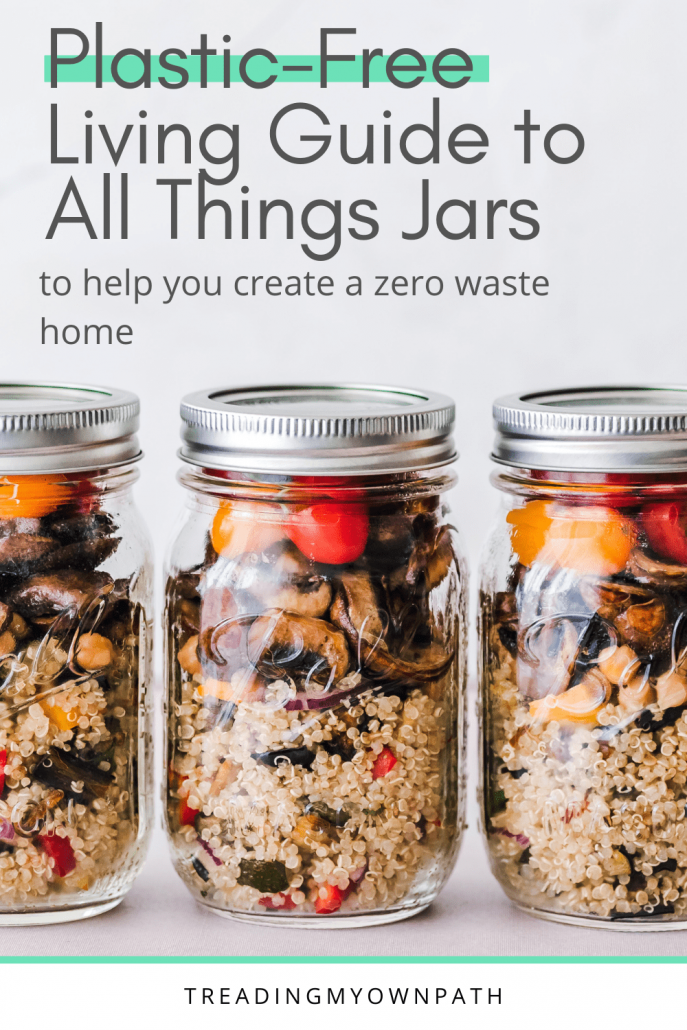
Some Uses for Glass Jars
If you have access to a bulk store (where you can put food directly in your own containers to avoid packaging), glass jars are perfect. Ensure the weight of the jar is recorded (you may be able to do it yourself, or you may need to ask a staff member to do it for you) so you don’t end up paying for it!
Shopping this way makes it very easy to unpack straight into the pantry.
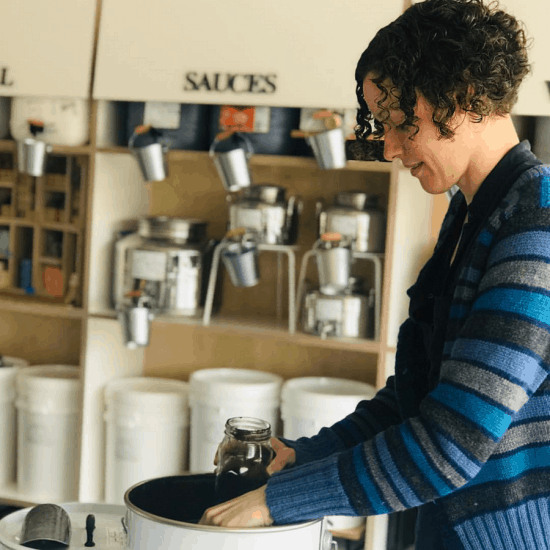
Jars can be used for storing food – taking lunch to work, keeping your pantry organized, holding snacks, storing leftovers in the fridge, and storing food in the freezer. Wide-neck jars are more suitable for freezing – ensure the contents are chilled before freezing, don’t overfill the jar (frozen food will expand) and loosen the lid until fully frozen, to allow for expansion.
Jars can be used on the go for takeaway smoothies or coffee. If you want to protect fingers from scalding, make a heat band using elastic bands or charity silicone wristbands, or use fabric.
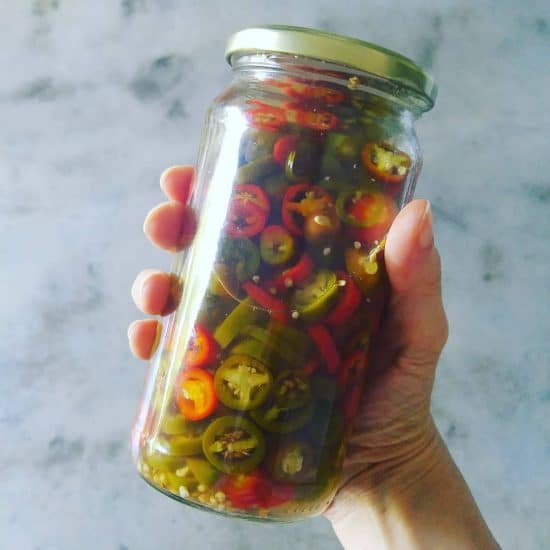
Jars can be used when making jam and chutney, for preserving and canning. They can be used to make fermented foods like sauerkraut. (In time, the lids will need replacing, but most lids should last a few rounds. For canning you’ll need jars that are suitable for this purpose.)
Jars can be used to store non-food items, like toothbrushes or pens, keep small recyclables like batteries or bread tags, or for freshly cut flowers/foliage.
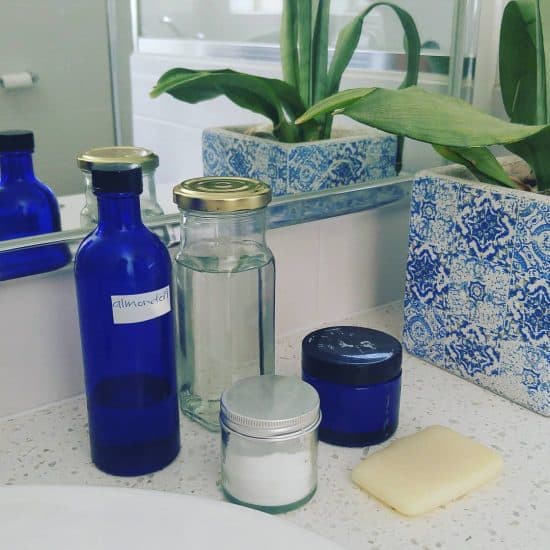
Jars can be used for keeping cleaning products such as laundry powder and personal care products like moisturiser. Some can be purchased in bulk, or you can make your own. They can be used for candle making.
Jars can be adapted with grater insert lids, pump and dispenser arm lids and sprinkler attachment lids to make them multi-purpose and increase functionality.
Jars can be used as gift packaging (store-bought or homemade treats, soap). A bit of fabric over the jar lid and they look fantastic!
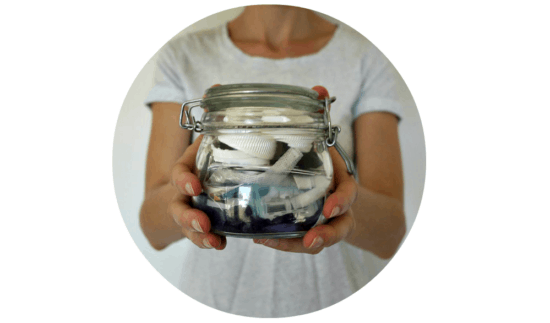
If you’re so inclined, you can even use a glass jar instead of a rubbish bin.
Glass jars replace so many things we have around the house. They are versatile, multi-functional and available everywhere.
Where to Find Glass Jars
The zero waste lifestyle is the second-hand lifestyle, so the ideal would be not to buy any brand new jars.
First, stop recycling your glass jars and save them for re-use. Rescue glass jars out of your friend’s (and family’s) recycling bin. Rescue jars from the office kitchen (the enormous coffee jars that are often found in workplaces are great for food storage). Rescue glass jars from restaurant and cafe recycling bins (you’ll probably need to ask first – this is where I sourced my 2 litre glass jars).
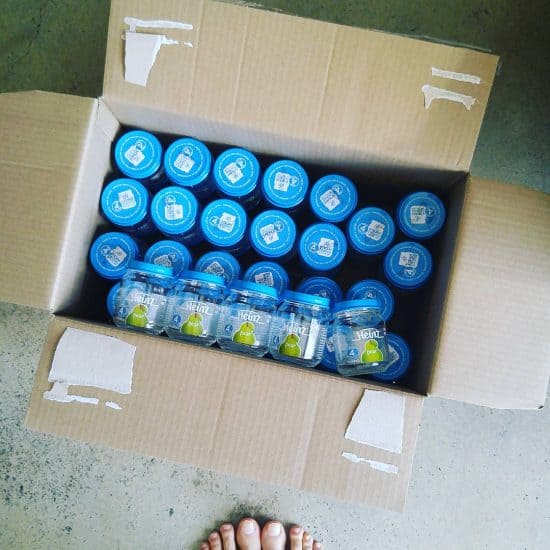
Ask on your local Buy Nothing group, or zero waste/sustainable living Facebook Group. Look at online classifieds such as Gumtree or Craigslist to see if anyone is donating or selling boxes of old glass jars.
Charity shops are a great place to find vintage glass jars, and some of the more fancy/specialist jars such as those required for canning.
If you really need to buy new, consider visiting a local specialist cookware or homewares shop rather than ordering online. Glass is breakable and needs to be heavily packaged to protect it – this will probably mean using plastic. Then there’s the carbon footprint associated with shipping (glass is heavy).
It is lower waste to buy the jars that have already been shipped to within a few kilometres/miles from your home.
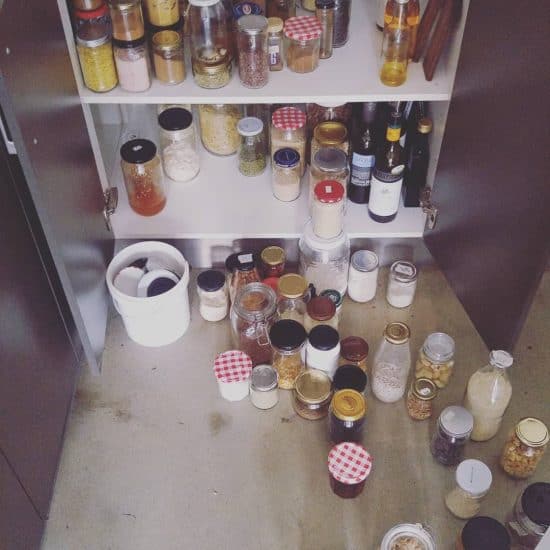
If you can’t bear the thought of second-hand mismatched jars and really need a set that is more pleasing on the eye, plus don’t have time to trawl through online classifieds slowly slowly building up a matching collection, no judgement. Everyone has a mess threshold and if this is what tips you over the edge, do what you need to do. You’ll be using whichever jars you end up with forever – that’s how zero waste works, right?!
Different Types of Jar Lids
The most common jar lids are those from repurposed jars: made of steel with a plastic lining inside to slow down the metal rusting/corroding. The threads wear over time, so older lids will not give airtight storage. Whilst not plastic-free, the plastic typically isn’t touching the food, and I’m happy to use these as they are readily available at fit the jars I have.
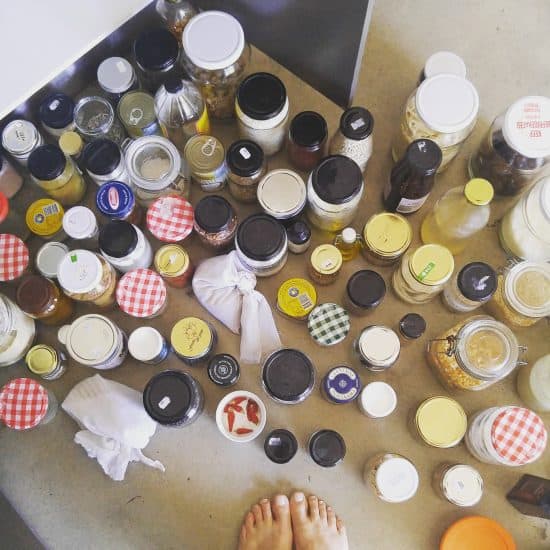
Occasionally you might see aluminium lids, and these have a plastic wax disc inserted to separate metal and contents. The wax disc can be easily removed to create a plastic-free jar and lid.
Some jars have plastic lids. If the jar is a shape I know I’ll use, I’ll keep it, otherwise I’ll pass it on (more details on where at the end of the post).
If you really want to avoid plastic, its possible to find jars with glass lids, that seal with a silicone band. The lid stays attached to the jar with a metal hinge system or with metal clips. These jars are also suitable for canning as the silicone band creates an airtight seal.
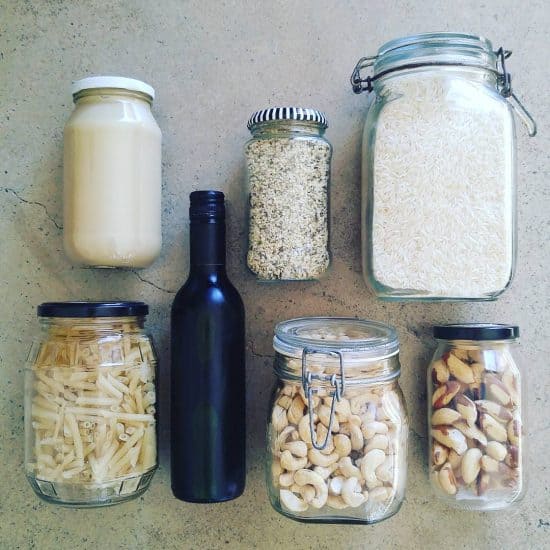
Le Parfait is the classic French brand for the hinge lid jars, although many similar versions exist without the visible branding. Weck jars are German, and use the clip system. It is possible to buy wooden lids for Weck jars which seal without the clips – not suitable for canning but more suitable for pantry storage.
Metal jar lids can be recycled via a metal recycler at the end of their life, and new lids can be purchased from specialist kitchenware shops or online without needing to buy a whole new glass jar to go with it. Alternatively, you can find second-hand jar lids.
How to Remove Labels from Glass Jars
If you’re lucky, the label on the jar will peel straight off. If not, try soaking in water for a few minutes. For some labels this loosens the glue and then label comes straight off.
If you attempt to pull off the label and it comes off, leaving a sticky, gloopy mess on the glass in its wake, my tip is to use eucalyptus essential oil. (I’ve been told lemon essential oil also works well.) Dab some onto a rag, and wipe – the glue comes off instantly.
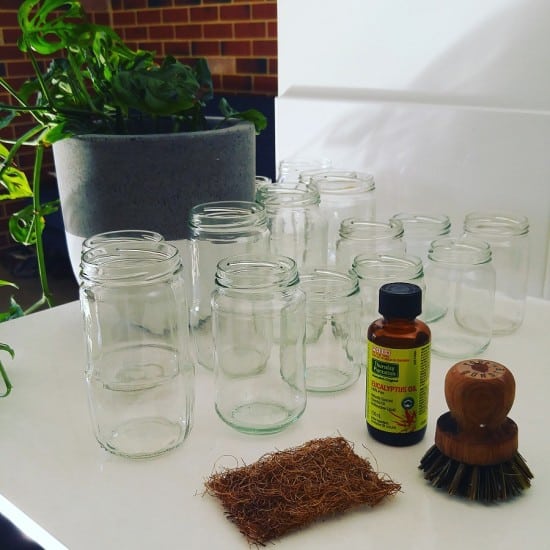
If that’s not an option because even after soaking all you’ve managed to do is fray the outer edges of the label, coconut oil will get that label off. Smother the label in coconut oil, and wait. I usually do this overnight – but this time I have label rage and need a break before resuming the activity! After a few hours, the label will just slide off. Magical!
Of course, you don’t have to remove the labels. But it is a lot easier to see what is in the jars, looks neater, and saves the confusion of eating “mustard” only to find out it is jam, or constantly moving the dried oats to the fridge because the label says “keep refrigerated”.
Finally, on the topic of labels: if your lids are slathered with brand logos or are a rather unappealing shade of green or lurid yellow, you can paint them with blackboard or other paint. You could by replacement lids. Alternatively, you can put up with the marketing in your cupboard.
Labelling your Glass Jars
Now you’ve got the old labels off, time to label with what’s actually in the jar. The contents of the jars I keep in my pantry swap and change all the time so I don’t want permanent lettering and labels. If you do, you could use a label maker, if you have one (it is plastic).
Alternatively you could paint blackboard paint rectangles on the jars, and write on what’s inside as it changes.
If you have sharpies and marker pens at home (I don’t) you can use these.
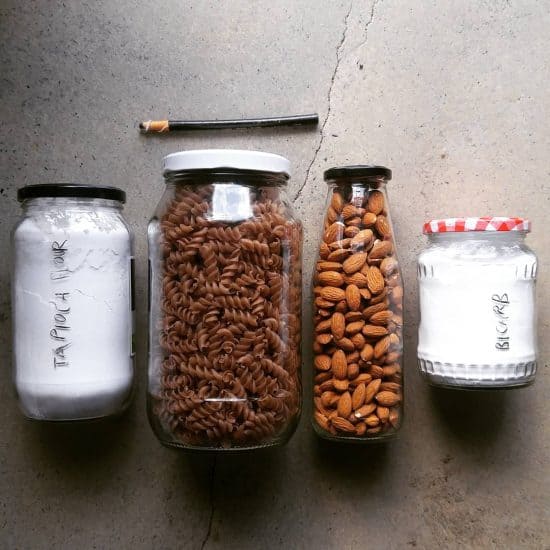
I use a china pencil – a wax pencil wrapped in paper. I have a black one and a white one. Art supply stores will sell these. I label my jars infrequently – only when I know I can’t tell what it is without the label! I wouldn’t label pasta, for example – but bicarb? That’s a yes.
Alternatively an option is to label on scrap paper or card, and tie the label to the jar with elastic bands or string.
What to Do with Glass Jars When Your Jar Habit Gets Out of Hand
Eventually – dare I say it – we can end up with too many jars. When the pantry is full of glass jars, the bathroom cupboard is also full of glass jars, the cupboard under the sink is overflowing with glass jars, and there are two surplus boxes of glass jars in the garage/shed, it is probably time to let some glass jars go.
There’s really no need to hoard jars. If you suddenly realise that you need more glass jars in the future, you’ll be able to find some, for free, in a matter of hours. Probably less.
Rather than let your excess gather dust, pass them on to someone who can use them straightaway.
Glass jars can be gifted (and even sold) via social neighbourhood network sites, Buy Nothing groups, zero waste or sustainable living Facebook groups and online classifieds – the same places I suggested for looking for jars at the start.
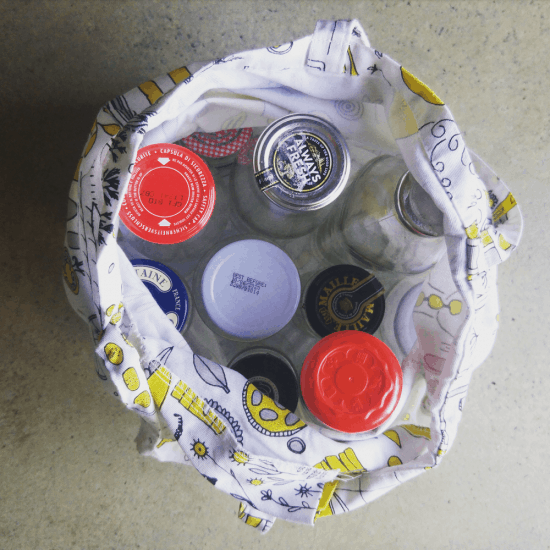
Some bulk stores will accept old glass jars for reuse. They pass onto customers who forget their own containers when they come to shop at the store. Charity shops might accept glass jars, but they will only want the good ones (branded is better), not the ones you fished out of recycling.
Glass jars are like the currency of zero waste. Use them where we can, pass them on when we cannot. Do not throw them away! They are a great reusable vessel, and single-use jars are surely a crime. Why would we go to the trouble of putting a glass jar in the recycling bin, only for it to be transported, ground down, melted and remolded right back into… a glass jar?
The zero waste lifestyle is the second-hand lifestyle, after all.
Now I’d love to hear from you! What do you use glass jars for? What’s the most unusual use of a glass jar you’ve come across? Any tips for finding quality glass jars, or any tips for where to pass unneeded jars onto? Are you a fan of second-hand, or do you buy new? Any other thoughts? Please share your ideas in the comments below!

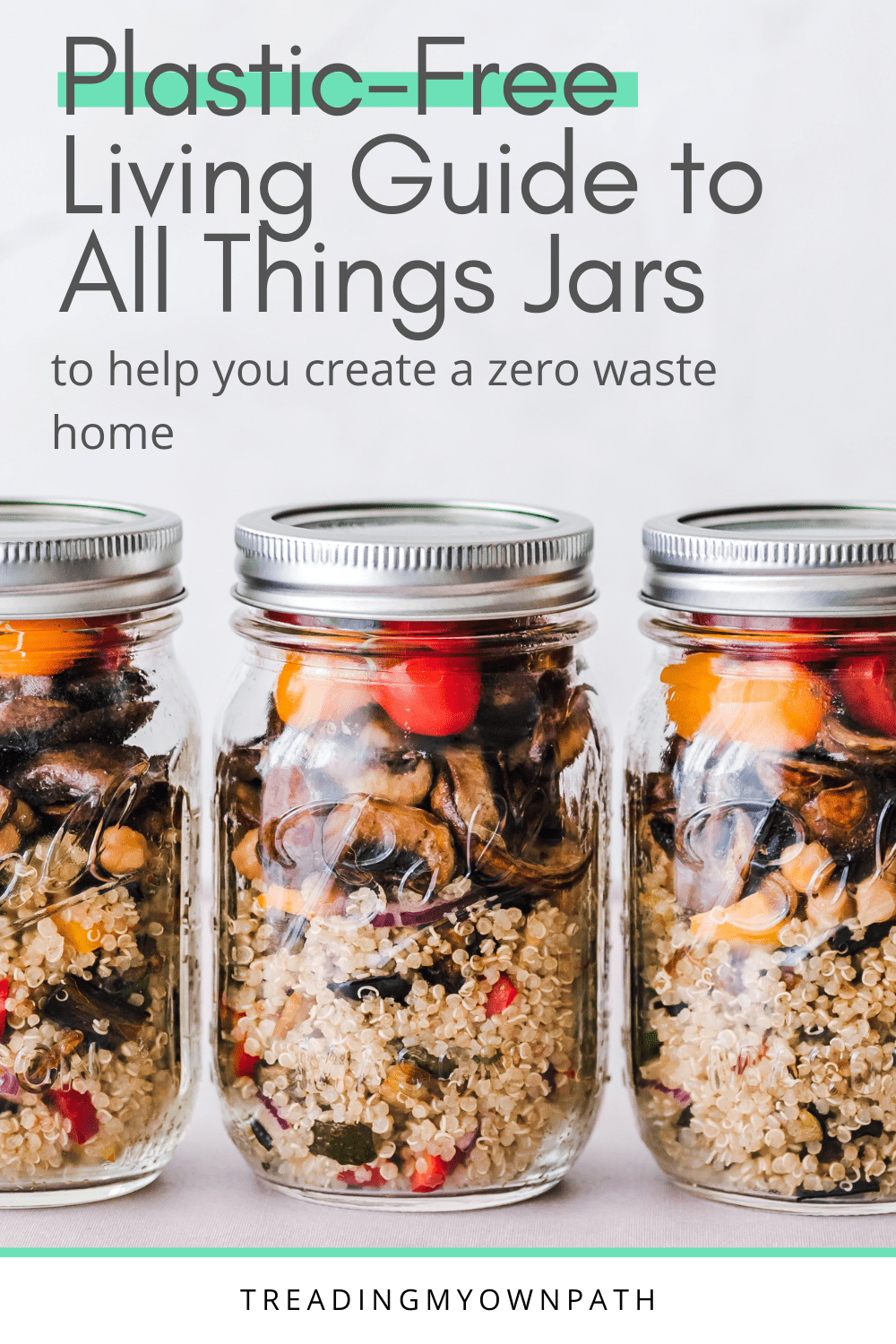
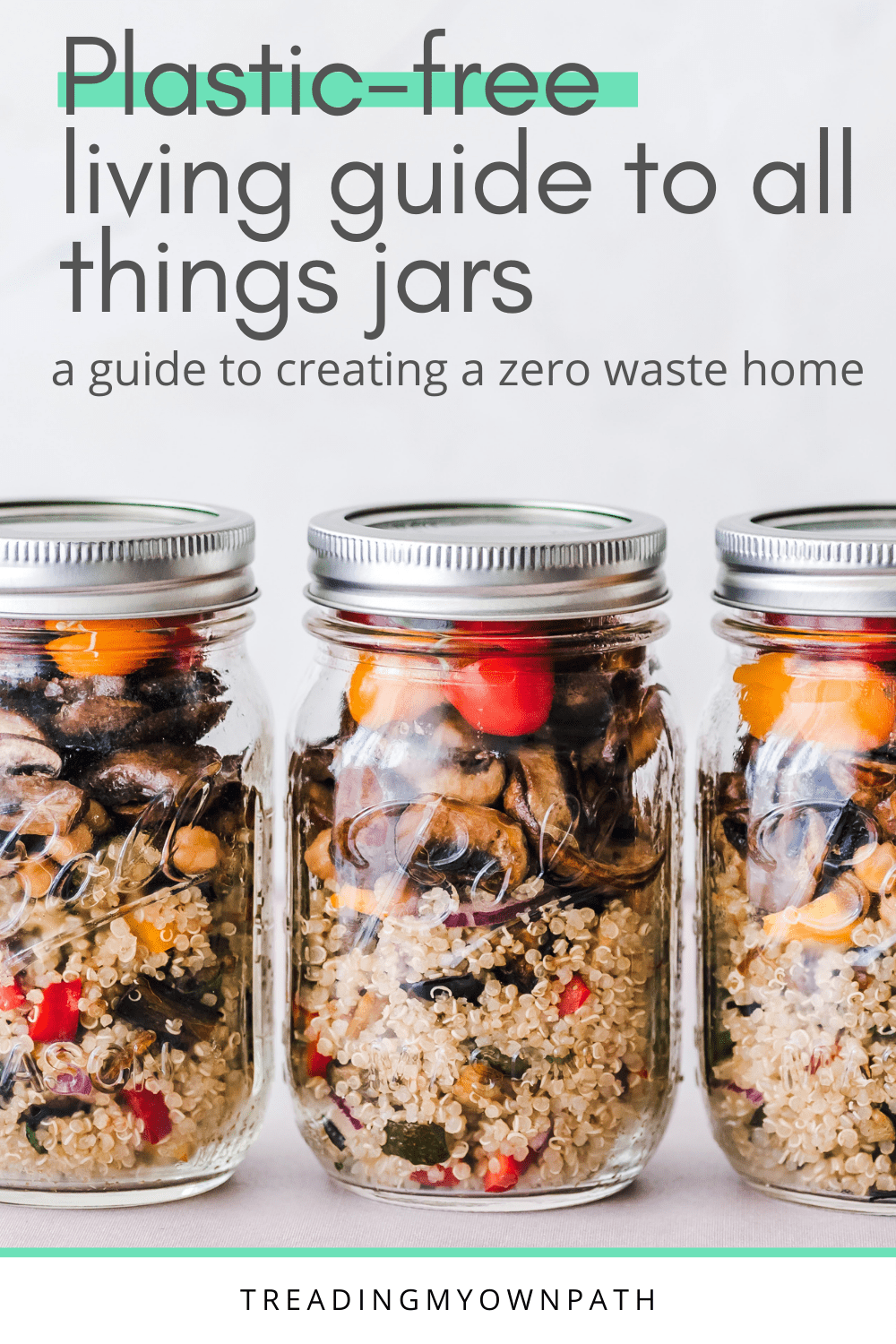
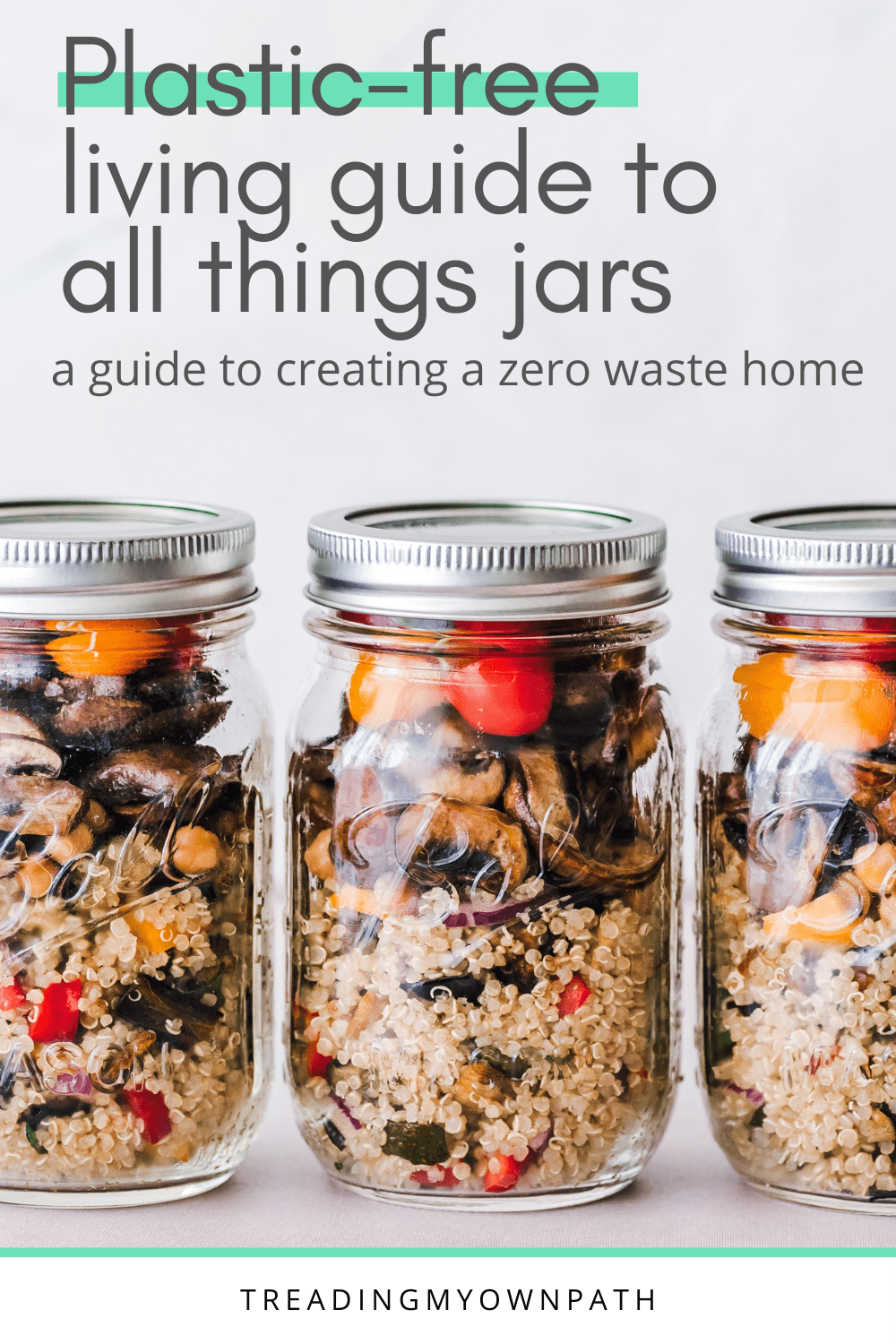

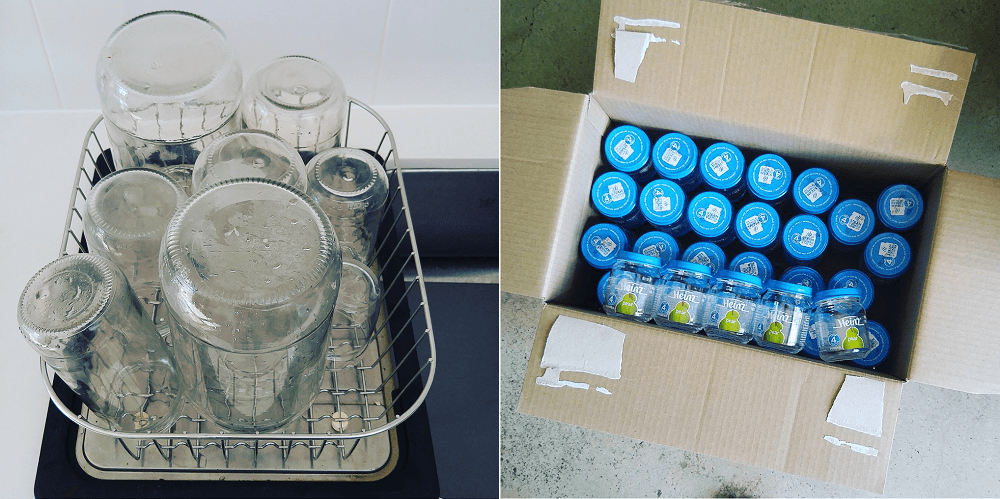
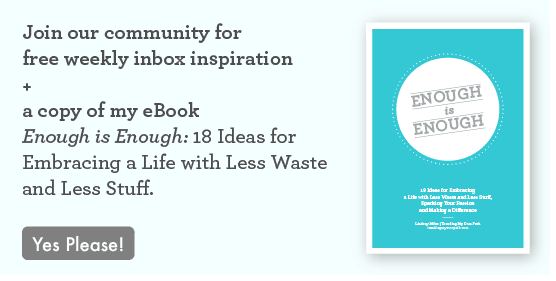


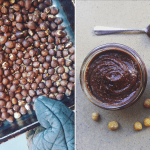
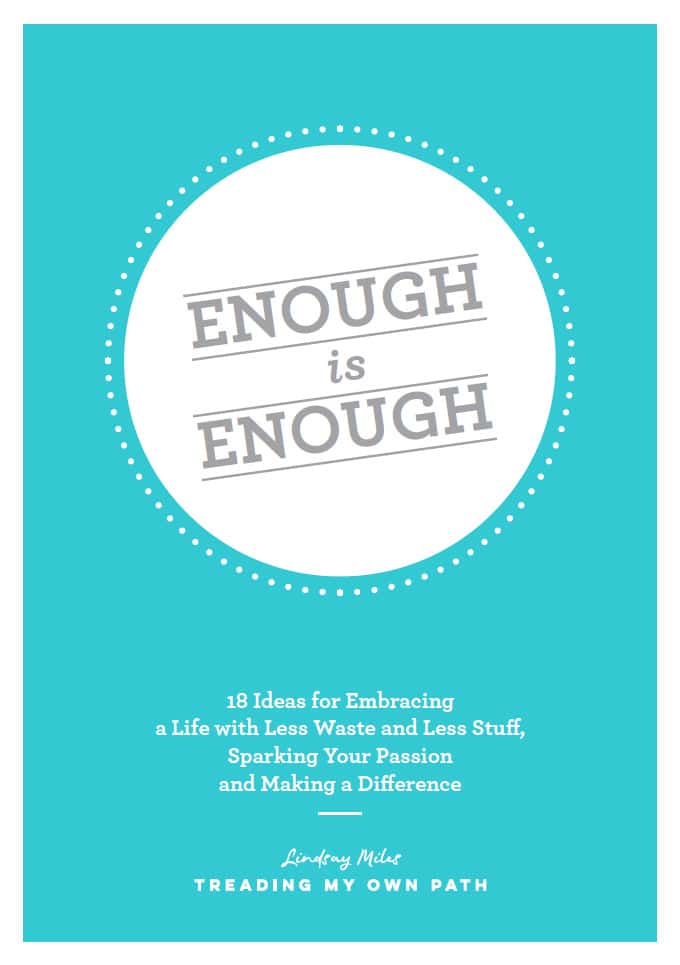
Here in Perth wasteless pantry and weigh and pay have jar take it or leave boxes at doorway.
Another use, I use old glass wine, sauce ( narrow neck bottles) to keep homemade vinegettes in ( so easy to make and I can control the sugar and salt) and flavoured oils ( another Hugh hit over the holidays)
Hi Mary, yes the localWasteless Pantry and Weigh ‘n’ Pay bulk stores are great. My local Source is way too tiny and have zero room, but I’m not sure if the other two Source stores take jars. The Storehouse in Fremantle also take them :)
And repurpose, hurrah! :)
What is the best way to get the smell and/or flavor out of a jar? Ie; salsa or taco sauce. I’ve tried boiling and letting it sit with vinegar and yet the smell remains. Whether it’s food or a hairpins, I don’t want whatever I put in next to smell like taco sauce.
Put some bicarbonate soda in the jar and seal it for a few days. Add some white vinegar. It will fizz up then rinse with hot water or dishwasher. This works most of the time. I have come across some where I just can’t get rid of the smell though.
I have the same problem with jars of minced garlic! You just dont want to give your homemade jam as a gift in a jar that once had garlic in it! I printed my own labels on sticker sheets I had at home.
I hear you, Melanie! I do always give my jar lids a quick sniff before putting onto sweet things! Just to be sure!
Thanks Coral, yes I agree about the bicarb, but I usually just soak with bicarb/water. Tis the vinegary pickled things that are the hardest to remove…
Hi Amber, I agree with Coral below – bicarb! Sometimes the lids can’t be saved (because that plastic lining isn’t so easy to clean as glass) but it’s possible to find new lids for not much. Usually I find this with pickles, but I keep the lids for… pickles! ;)
When my kids get stickers at school etc. I put them on the jar lids.
Glass gets turned into road base in western Australia
Hi Som, ah that is a good idea! It is true that some glass is used for roads, but not all. Personally, I don’t call this recycling, but downcycling. No-one be remaking glass jars out of old road base, sadly …
We started using Moccona coffee jars, about 5 years ago, for dry pantry goods like oats, nuts, seeds and flour etc.
Gradually replacing the 25+ year old (and smelling like it) Tupperware cannisters. They are easy to see what’s within, we’ve had no breakages, the bonus coffee aroma initially on the oats was yummy. Also the press on lids haven’t deteriorated with use. Screw top jars are used for lunches (Soup, stir-fry or cut fruit) fridge to microwave ware just begging to be used instead of buying purpose made items
Love it, Phil! Those coffee jars are so versatile, tis a crime that anyone ever throws them out! The old Tupperware was good at lasting at least – the plastic containers that are available these days seem to split and crack in no time. Not fit for purpose :(
If we are talking about the REAL Tupperware, it can last a lifetime!! I have some that is more 30+ years and continues to be going. Cleaning it with baking soda ( bicarbonate) and a little water/vinegar to make a cleaning slurry is one way to deep clean/ remove stains. IF it is splitting or cracking, peeling or chipped, then it can be turned in for a new piece!! It is guaranteed for a lifetime!!
Love this post as it has inspired me to do even better. I have been using my medium wide neck jars to dress up potted mini succulents (over grown in my garden) as gifts, which sparked request from some work friends asking if they could buy some of the beauties of me. Mini spice glass jars I use as toothbrush holders under my sink and to hold the random bread clips when they appear. I have learned that if I need to buy a product in a jar that I will buy it in a jar that is going to best reused in our house.
Hi Lou, love your ideas! Howe awesome that people want to buy your succulent jars… that is great. And yes, I totally agree with you about if buying something in a jar, make sure it is a good jar that will be reused!
I love this post as well¡ In fact I hardly ever throw glass jars, because I think using them just one time doesn´t make any sense. On the contrary I think it would be interesting they are also reused by the factories, local shops and companies,… not only at homes, but at the factories which packed the products (reverse logistics). In Spain, where I live, this has not developed yet, has it done already over there?
The question is how to given them back: it is not easy but I think when you are buying the same product (in a glass jar) you end up with a box full of 10, 20, 30 jars.. in a year and perhaps it is possible to return them, specially if the product comes from a local business or a business near you.
In Germany and Scandinavia customers get money back to return glass bottles to the supermarket which are then reused by the manufacturer, they’ve been doing that for decades, it seems to be a no brainer but sadly no sign of this happening any time soon in the uk !
I just fished out a cute mustard jar from our household recycle. Husband missed the look of indignation I gave him. Back to the sink for a good washing and then back into use.
I just came across this article the other day. I wish these initiatives would develop quickly, I want to use them!! https://www.fastcompany.com/90296956/a-coalition-of-giant-brands-is-about-to-change-how-we-shop-forever-with-a-new-zero-waste-platform?partner=rss&utm_source=facebook.com&utm_medium=social&utm_campaign=rss+fastcompany&utm_content=rss&fbclid=IwAR0aAsfBQxg-Xo8HMse-uNEoca8cbywF_J0xo7TzTc2iBBKiz6t5rW-vwPI
Wondering why you use plastic at all. I would love to see a video using mon-plastic container only in your kitchen please.Here in Denmark we are doing our best not to use plastic at alll.Even net basket have plastic over the wire. Problem with most glass jars in the cupboard is that they take up more room. Nice video though
In the US, at least in NY, haven’t quite caught up with this yet. My supermarket can’t tare jars, or mesh bags with a weight. I just decant purchases into jars once home. Some managers are nasty, too! Sometimes the lids get rusty since they are not designed to go in the dishwasher.
This is tough! Depending on what you’re purchasing in bulk, you could go the paper bag route – get those little brown paper lunch sacks for your bulk items. They don’t weight much, so won’t cost too much extra to purchase your items in them. And you can reuse them since it’s just dry stuff going into it!
Our kids keep a jar of water each in the fridge in summer. Much easier to handle for small fingers than pouring water from a big bottle into a glass.
you suggested peeling plastic off the lids of jars to reveal aluminium underneath. Which is worse? carcinogenic wax or aluminium?
If you paint on the jars with chalkboard paint, can the jar go in the dishwasher?
Tip for removing labels from glass jars. The majority of labels these days seem to be made from plastic not paper and the glue is not water based, this means they don’t peel off no matter how long you leave them soaking. I put a splash of water in the jar and zap it in the microwave for about 30-40 seconds. Be careful as it will be hot when you remove it. Then I pour out the water and start peeling from one corner very carefully, kind of pulling it back on itself. The heat softens the glue making it easier to peel the label off. A sticky residue is left but this can be removed with a drop or two of eucalyptus oil rubbed into the residue and scrubbed off with an old toothbrush, then I add a spot of dishwashing liquid and wet the toothbrush. A teaspoon of bicarbonate of soda topped up with water and left for a day or so usually gets rids of strong smells (e.g. pickles, curry paste etc). I then put the jar in the dishwasher to clean it completely.
Hi there, I love your articles and information. Thanks so much for sharing.
Just wondering, how do you get the stink out of the jars? I have several jars under my sink but each time I go to use them the odour of sun dried tomatoes or artichokes is just too much for the thing I’m wanting to store. What do you to to stop it?
Louise
I recently saw the idea of labelling jars by printing up the label in a font you like, sticky tape to inside of jar and then go over outside with a chalk marker. This way it can be washed off so jar can be reused. It also means you can have legible writing if your own is really bad.
i’m older as is my husband and while i’m committed to using glass for pantry storage i’m worried about jars slipping out of my arthritic hands – anyone have any ideas for decreasing the odds? – thinking some simple crafty thing; paint ridges, sew a cozi etc…
I put a couple rubber bands around the jar and/or those rubber “cause” bracelets that were popular. Makes it easier to grip when opening the lid too.